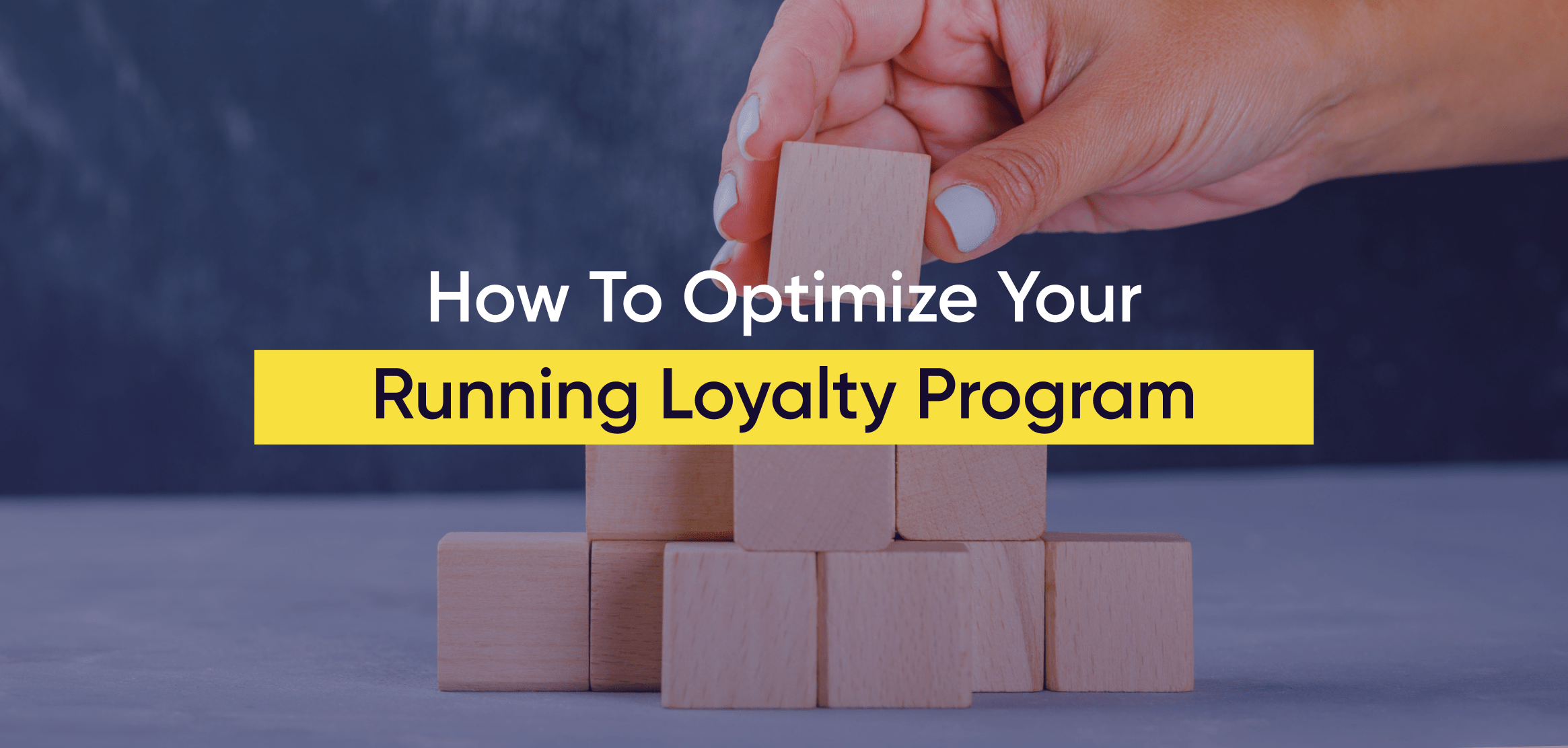Launching or re-launching your loyalty program is such a momentous occasion. But once the celebration is over, you must brace yourself for the true challenge: maintaining the program in the long run. So, let me share a secret about loyalty program management: you need to plan two steps ahead right from the start. The market is changing rapidly, and you must be prepared to optimize, measure, and upgrade your program to maintain relevance — and market share. Don’t worry, though — this article will tell you how.
Understanding program performance is key to loyalty program management — so if you haven’t tracked your ROI, start right away! Use our handy ROI calculator worksheet to get your results up to speed.
What Loyalty Program Management Is About
Loyalty program management is a series of managerial activities aimed at running, analyzing, optimizing and upgrading the rewards program. On a micro level, it involves maintaining reward campaigns and handling member complaints, but on a macro level, it’s all about keeping the loyalty experience fresh.
The Role of a Loyalty Program Management Software
Also known as a loyalty program platform, the loyalty program management software is where the magic happens. It allows program managers to review the reward system’s functions, create and organize rewards, and introduce new campaigns.
Loyalty program management software can be built in-house, or licensed from a third-party technology vendor. In-house software grants greater control over the feature set, become outdated quickly. Developing new features is time and resource-intensive, and integrating it with other martech ecosystems is troublesome. Third-party loyalty program platforms (especially pure-play ones) are highly sophisticated and are built to serve a wide range of business needs.
Planning & Strategy – Have a Clear Objective From Day One
The key to being successful at loyalty program management — something that is often not mentioned — is that you cannot rest on your laurels once the program launches. A common mistake for loyalty program owners is launching with a successful MVP and sticking with it for years. This is a recipe for lost potential.
You need to create an action plan. Think about what the next stage of your loyalty program should look like. Maybe you have some cut content or missing features that didn’t make it into the final launch — do you wish to add them on the go, or wait for a full iteration?
Your goals need to be clear, as do your timelines. Being impatient with your loyalty program is just as harmful as being overly laid back. Overall, start building a structure for managing your loyalty program — the future you will thank you for it.
Always think about how your goals can be achieved in the long run and how sensible they are. “I want to make more money” is not a goal, it’s a wishlist. That’s why you need to have SMART goals: goals that are Specific, Measurable, Achievable, Relevant, and Time-Bound. A goal can be increasing your AOV by 5% for your top tier member by the end of H1.
Staff Onboarding – Optimize the Daily Management Flow
While the head of the loyalty management plans for the future, it’s equally important that the rest of the team learn how to use the loyalty program management software. The rule of thumb is that change management shouldn’t involve coding. At all.
Asking for IT help every time you want to modify a campaign might not seem such a big deal at the beginning. But it’ll grow into a significant roadblock for innovation and flexibility as the years go on. In fact, this is one of the 7 signs that a replatforming is in order.
This is all important because there might be situations where you need to react fast. Maybe you want to introduce a last-minute holiday reward campaign. Or you encountered loyalty program fraud. If your team doesn’t know how to use the loyalty technology easily and confidently, an otherwise avoidable situation can turn for the worse.
Analyzing the Results – Trust Your Processes
The next step in loyalty program management is measuring the results. If you were able to set clear goals for the program and have all your KPIs aligned, it’s not that difficult.
Still, keep in mind that you need to be realistic about the results. Loyalty programs are about changing customer behavior — it’s not going to happen overnight. For example, ROI and reward redemption rates cannot be accurately measured until the second year of the loyalty program’s runtime, because members need time to collect points and reach higher tiers.
That’s why you should trust your processes and avoid making hasty changes. An absolute no-no is changing the point cost of certain rewards post-launch. This move always angers the community, and the loss of faith and negative word-of-mouth always costs more than what you could save.
Data-driven Decision Making – Leverage the Power of Your CSMs
Another thing no one tells you about loyalty program management is that you don’t have to do it alone. If you are rolling with a third-party tech provider, you most likely get access to the company’s Customer Success Managers.
A CSM is a person who connects two worlds. They bring knowledge about loyalty trends and strategies to the table through reports and reviews, and help monitor the program’s performance.
There are multiple ways you can leverage the power of a CSM. Naturally, you can ask for their help in strategizing, because they thoroughly understand both the tech and your loyalty concept. Moreover, make sure to book a business review semi-annually to analyze the loyalty program’s metrics.
Think about working with your Customer Success Managers as a partnership: we’re here to brainstorm ideas with you, measure the results of your initiatives and inspire you with examples from the market. We’re 100% always there for you and in your corner. Not leveraging our time would be a pity as we do see customers who rely on us more are also the most successful ones.
Continuous Development – Level Up Your Loyalty Program Concept
At this point, you probably have a solid understanding of the strengths and weaknesses of your loyalty program and are ready to move to the next stage. When it comes to upgrading your existing loyalty program (without changing the tech), there are two routes to take: either use your existing features differently or try adding new ones.
In case of the former, consider introducing new campaigns, such as double point campaigns centered around a product type, or holiday-related promotions. As for the latter, gamification and challenges are evergreen features that are always welcome.
Either way, when thinking about leveling up your loyalty program, avoid trying to do too many things at once. Just like during the implementation phase, scoping is key. You can always add the other idea 6 months down the line.
Based on my experience working as a CSM, the biggest mistakes you can make include (1) not familiarizing yourself with the technology – learning how to use the platform will allow you to be more autonomous and achieve your goals faster – (2) not relying on your CSM for inspiration and knowledge sharing – we see loads of programs and can offer you insights you won’t find elsewhere – (3), last but not least, wanting to do everything at once – first of all it’s not realistic, second of all you want to spread new elements of the program through time to keep it always fresh and engaging.
Get Your Groove on for Loyalty Program Management
Managing your loyalty program is a long-term project, but it can drive immense benefits for your organization. Looking back in 3-5 years time, you’ll be grateful for the effort you put into strategizing and learning the loyalty tech.
Speaking of loyalty program platforms, if you are curious about what Antavo’s Loyalty Cloud has to offer and how it can empower your loyalty concept, our team of experts is more than happy to hold a demonstration for you! Just book a demo, or if you are looking for direct answers, send us an RFP.
Lastly, we recommend downloading our highly popular ROI calculator worksheet. After all, ROI should be a key (but not the only) indicator of whether you are doing loyalty management right.

